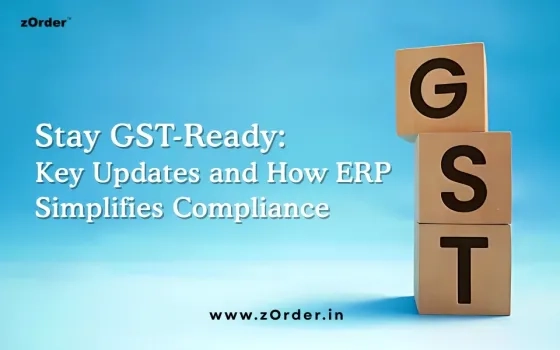Would you still watch YouTube if you had to pay for every single video that you watched there? Or let’s put it this way, do you think Netflix or Amazon Prime would offer the same amazing spread content if you could watch them all for free? In all probability, the answer is an emphatic NO.
Welcome to the various OTT video monetization models. In this age of streaming wars, where incumbents like Netflix, Hulu, Amazon etc. are facing tough competition from new entrants (the most recent one being Disney+), customer stickiness is paramount to stay in business. And that means OTT video service providers should not just produce great content but also offer lucrative options to viewers to keep them subscribed to their services. In this article, we will put forth the various available options for OTT video monetization.
But a little bit about Video on Demand first.
History of Video on Demand aka VOD:
Video-on-demand (VOD) is a video media distribution system that enables users to access video entertainment any-time, any-where and on any device of their choice. While broadcasting via over-the-air programming was the commonest form of content distribution in the 20th century, consumers started to gravitate to Internet and IPTV for content consumption. This culminated in what is now popularly known as Video on Demand where consumers can use their televisions and personal computers to access videos from a large online library whenever they want to.
VOD services first surfaced in 1990’s. This was made possible by the amalgamation of two powerful technologies of that era:
- DCT (Discrete Cosine Transform) Video compression which reduced the required bandwidth of a television signal from around 200 Mbps down to 2 Mbps
- ADSL (Asymmetric digital subscriber line) data transmission which helped enhance the bandwidth of a telephone line from around 100 kbps to 2 Mbps
Stitched together these two technologies helped implement the VOD services at approximately 2 Mbps bandwidth in the 1990’s.
Types of Video On Demand Revenue Models:
As per Statista, for the fiscal year 2018, Netflix reported earnings of US$1.21 billion, with annual revenue of US$15.8 billion, an increase of approximately 116% over the previous fiscal cycle. Yet another case in point is the Google-owned video behemoth YouTube which has approximately 2 Billion monthly users, who consume 250 Mn hours on TV screens daily.
It is true that people are averse to the idea of paying money to watch content, generally. However, businesses in the OTT video space must devise their content strategy in conjunction with the apt revenue model to find success in the video streaming business. After all, if people get quality content at a reasonable price, they will not mind the cost!
Here are some of the popular VOD revenue models that help OTT service providers monetize their offerings:
Subscription Video on Demand (SVOD):
SVOD is one of the most common and popular revenue models. It works on the principle that users subscribe to a video service at a fee for a certain duration of time (monthly/quarterly /yearly) and accesses a variety of content available on that platform anytime on any device of their choice. Subscriptions are flexible i.e. they are auto-renewable or can be canceled at any time. Subscription models are ideal for platforms that have humongous content, such as movies, drama series, different genres to keep the audience engaged and improve customer stickiness.
Examples of SVOD are Netflix, Amazon Prime, Hulu, HBO Go to name a few.
Usually, the SVOD service providers monetize via subscription fees, which explains why there are no ads shown to the viewers while watching Netflix.
SVOD pricing models:
Once a content owner decides to go ahead with the SVOD monetization model, there are a few pricing models that they can consider for their customers and depending on the content that they provide:
- Free Trial: This is a limited-time offering, typically used as a glimpse to prospective customers wherein they can access the entire content library for free for a stipulated time period. If they find it satisfactory, they can subscribe to the service by paying a fee. This is a very common pricing model and is used by the likes of Netflix, Amazon Prime, Starz etc. to add more viewers into their league. Research says that 52% of people who sign up for a free trial convert into paying monthly subscribers once the trial period is over.
- Freemium: This refers to a basic version of the VOD wherein users can access the content for free for whatever time period they want. However, if they are interested to watch some premium content then they will have to pay for it. The “free” aspect of this pricing model attracts a large number of customers who want to access the content, but the conversion rate is very low and hovers around 3% -5% (as per data). Also, the VOD service provider needs to be on their toes to convince users to convert into premium customers.
- Varied Access: A bit complex concept to grasp, the varied access model is premised on the idea of offering differentiated content access for subscribers based on their subscription plan. For instance, Netflix has the offering of paying for 1 screen, 2 screens +HD or 4 screens + Ultra HD. Customers can go for their basic 1-screen viewing or can upgrade to add more screens and increase video quality. Service providers can be creative in offering these options for differentiated quality of service.
Transactional Video on Demand (TVOD)
The transactional word in this monetization model suggests that the consumer must purchase content on a pay-per-view basis. This model is the exact opposite of SVOD wherein the user gets access to individual pieces of content as opposed to the entire library that is available to viewers when they sign up for SVOD. TVOD is further divided into 2 subcategories where consumers can pay once to gain permanent access to a content piece also known as EST (electronic sell-through) or pay a smaller fee to access the content for a scheduled time period also known as DTR (download to rent)
Examples of TVOD are GooglePlay and iTunes. Usually, with TVOD, consumers get timely access to recent releases and offer higher revenues to rights holders. TVOD service providers sustain their viewership by offering attractive price incentives so that views keep coming back to them for fresh content.
Ad-Supported Video On Demand (AVOD):
The next popular VOD monetization model is the AVOD. It involves the inclusion of ads to offsets the costs involved in the production and hosting of content. This model is typically free for users who can log in and stream videos, in return for watching ads. This monetization model generates lower revenue but has a huge follower base.
YouTube is an example of AVOD, as is Daily Motion. Premium content owners are averse to AVOD as consumers want ads-free experience and AVOD also generates lesser revenue than other VOD models.
Hybrid Video on Demand:
As the popularity of Over the Top Video on Demand is soaring, services providers are looking at hybrid models to monetize their VOD content. Usually, these mixed models are a combination of SVOD and TVOD or a combination of SVOD and AVOD. For instance, while one can subscribe to Amazon Video for a monthly fee and access the existing content, however, in order to watch a brand-new movie or a live sporting event then the customer has to pay a certain price. Or for that matter, we can refer to Hulu which gives differentiated offerings at different prices to its subscribers. There is a lower subscription fee for including ads and a premium fee for an ad-free viewing experience.
The ubiquity of the internet, the proliferation of mobile devices, and the plethora of content that is being created have had a profound impact on video and the way in which it is being consumed. Technological changes and changing viewer habits will affect the way VOD monetization models shape up in the future. Irrespective of the monetization model that a service provider offers, Hughes Systique can help them make their offerings better with two of their powerful solutions. While HSC’s Video Delivery Solution is an end-to-end solution for video delivery and audio/video streaming for content owners, HSC’s Quality of Experience (QoE) Service Insights Solution provides real-time, multi-dimensional, integrated, customizable actionable insights into the complete delivery network chain of the video viewing sessions. The solution can be used by customer care executives, service providers, content providers, and CDNs to gain deep insight into the network conditions, subscribers’ behavior in different conditions. To know more about our solution, reach out to us using the form below.
References:





















Comment
Hi, Hughes,
Good to meet you at the Nasscom community. Great article, and thanks for sharing. I would suggest you including live streaming monetization revenue models, which give additional value to the readers.
Thanks!